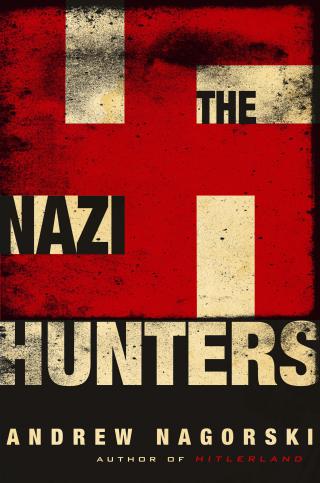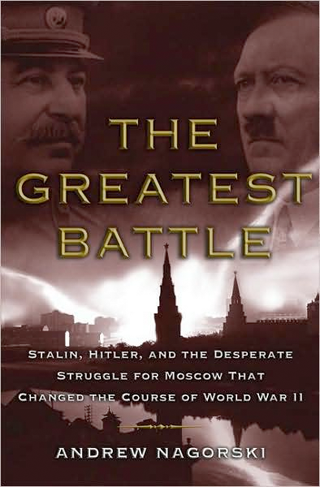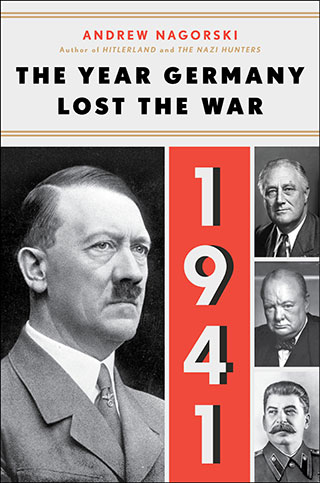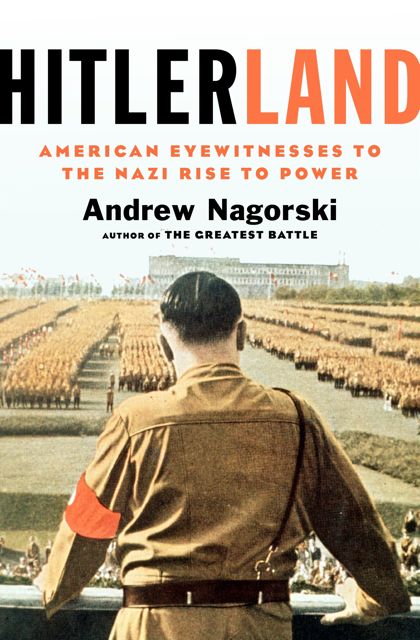
By Andrew Nagorski
Andrew Nagorski is the author, most recently, of “1941: The Year Germany Lost the War.”
Benito Mussolini took power in Italy in late 1922, making him Europe’s first fascist leader. Adolf Hitler, at the time a little-known beer hall agitator for his fledgling Nazi Party in Munich, would need another decade before he was positioned for a similar takeover in Germany. Yet in many histories of fascism and World War II, Hitler and his war machine receive almost all the attention, while Mussolini and the role of his armed forces are little more than an afterthought.
In “Mussolini’s War,” John Gooch, a British historian whose specialty is the Italian military, puts Mussolini and his forces front and center. The result is a painstakingly detailed, long-overdue chronicle of the attempts by the smaller Axis power to play an outsize — and unrealistically ambitious — role in the global conflict. This somber account underscores the multiple failures of Mussolini’s leadership, which led to his ouster in 1943 and his ignominious execution by his countrymen at the end of the war. His body was left on display in Milan, dangling upside down alongside the body of his mistress.
While Hitler comes across as pure evil, Mussolini is often indicted on the lesser charge of buffoonery. But the Italian leader shared many of the traits — and, above all, delusions — of his German counterpart.
Hitler spoke of Lebensraum, the “living space” for his people to be acquired by conquest; Mussolini spoke of spazio vitale, which meant the same thing. Hitler played upon his defeated countrymen’s feelings of humiliation after World War I; although Italy was on the winning side in that conflict, Mussolini played upon his countrymen’s wounded pride when exposed to the old refrain that “the Italians can’t fight.”
Hitler believed that his Blitzkrieg strategy would allow his forces to prevail against larger foes before they could mobilize all their resources. Mussolini’s term for this was a guerra di rapido corso. As Gooch writes, “The enemy would be defeated by a combination of speed, surprise and manoeuvre.”
Both dictators could boast initial successes. In 1935, Mussolini sent his troops to Ethiopia, subduing that country, whose territory was larger than France and Germany combined. On April 7, 1939, Italy invaded Albania, prompted by Mussolini’s eagerness not to be outdone by Hitler’s triumphs — his unopposed annexation of Austria and dismemberment of Czechoslovakia. The two fascist governments then signed their Pact of Steel, committing themselves to a common fight against all enemies, but it was a dysfunctional alliance from the start.
As eager as Mussolini was to prove himself a great conqueror, he knew that his country was far from ready for a major conflict. He dispatched one of his generals to Berlin with the message that his military needed at least three more years of peace to make the necessary preparations. Yet when Hitler ratcheted up the pressure on Poland, Mussolini sent conflicting signals. He told the British ambassador in Rome that he would back Germany if London made good on its promise to stand with the Poles, while Foreign Minister Galeazzo Ciano urged his German counterpart, Joachim von Ribbentrop, to avoid triggering a war with the Western powers.
Hitler was not about to be swayed: He had already decided to invade Poland, hoping that Britain and France would back down again as they did over Czechoslovakia. Rather than reconsider, Mussolini felt he had no choice but to stick with Germany — and, as long as that was the case, to grab whatever opportunities the larger conflict offered, including Yugoslavia and Greece. “It was already becoming apparent that Mussolini’s appetite was dangerously outrunning the means required to assuage it,” Gooch writes.
Driven by his hunger for glory and empire, Mussolini largely abandoned rational calculation by throwing his troops into far-flung battles in the Balkans, North Africa and the Soviet Union, while Italian ships and submarines fought for control of vital supply routes. The Italians scored some victories, but they were usually outgunned, outmanned and outsmarted.
“Mussolini had little if any comprehension of military strategy and none at all of grand strategy,” Gooch maintains. Moreover, Mussolini believed that any weaknesses could be overcome by sheer willpower. His credo: “He wins who wants to win.” Hitler was better prepared at first, but he was guilty of similar overreach and overconfidence — and, of course, of undermining his cause by his relentless policy of terror and mass murder in the lands he conquered.
While Mussolini’s forces did not commit crimes on as vast a scale as their German partners, Gooch leaves no doubt that they were deeply implicated in them. An Italian soldier in Slovenia described how his unit burned peasant houses and carried off the animals “just like the Germans taught us” — and how, when the peasants tried to stop them, “we sorted them out.” In Russia, Italians handed over Jews and partisans to the Germans, sealing their fates. Elsewhere, Mussolini at times resisted German pressure to surrender Jews, but that hardly evened the score.
Mussolini recognized sooner than Hitler did that they were fighting a losing battle against the Soviet Union, even urging him to try to make a separate peace again with Stalin. But it was far too late for another Nazi-Soviet pact — or for any other last-minute act of salvation. Italy was the first Axis power to fall, before Germany or Japan. In Gooch’s telling, Mussolini’s disastrous leadership allowed for no other outcome.
Mussolini’s War
Fascist Italy From Triumph to Collapse: 1935-1943
By John Gooch
Pegasus.
532 pp. $35









